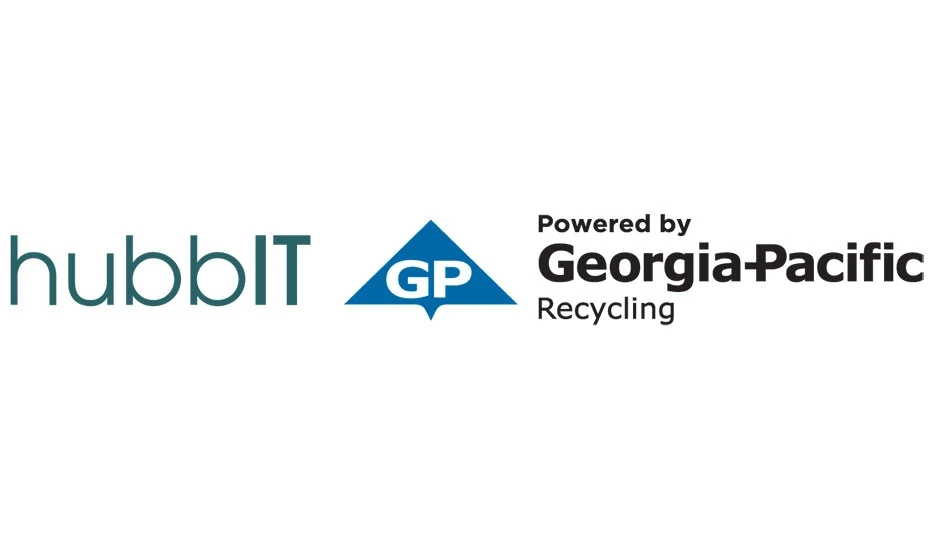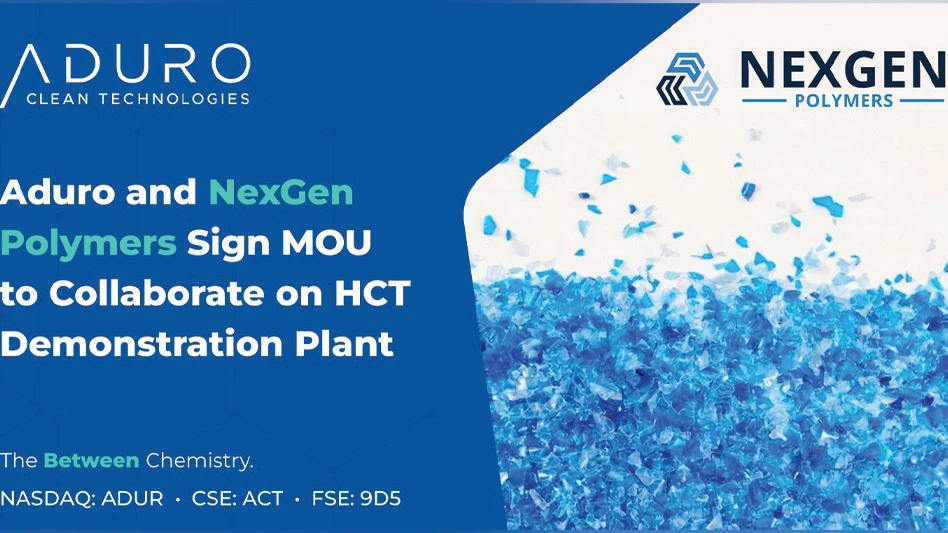During much of the past three years, while steel, copper and other metals were accelerating to new highs in pricing seemingly every other month or so, aluminum led a comparatively stable existence at times.
But the later part of 2005 and early on in 2006, aluminum traders have seen their commodity show continued strength, as the ripple effects from China’s growing industrial economy finally reach other shores.
In January of 2006, producers of secondary aluminum in particular were charging more for many of the alloys they make from aluminum scrap, and the London Metal Exchange North American special aluminum alloy contract (NASAAC) reflected the trend with record pricing.
MOST WANTED. Domestic buyers of aluminum scrap have known for some time that many parts of the world have badly wanted the material, but it often seemed that pricing just wasn’t following the demand curve.
In 2005, however, increased buying from Asian markets may have helped provide the critical difference that has helped begin to push aluminum scrap grades into new pricing levels.
Figures collected by the U.S. Department of Commerce reveal that in the first 11 months of 2005, aluminum scrap exports increased nearly 66 percent compared to the first 11 months of 2004. For the used beverage can (UBC) grade, the increase was even more dramatic, as overseas buying increased by nearly 300 percent.
China was the key destination for the material, accounting for more than 60 percent of all nonferrous scrap exports, with a substantial presence not only in aluminum, but in copper and in zinc, as well.
The marketplace is feeling the effects of increased Chinese buying. "It never slowed down at Christmas time," notes nonferrous broker Michael Kirk of Golden Metals Trading, Littleton, Colo. "Everyone is wondering when the bubble is going to break."
| Metallic Crime Wave |
|
Reports of metals thievery have increased dramatically with the sustained surge in pricing during the current bull market. Thieves have brazenly removed copper sheeting from an onion-domed orthodox church in Cleveland, stolen several window air conditioning units from the same building and removed aluminum siding from single-family homes. A January AP news report noted a scrap metal-seeking crime wave in Springfield, Ohio, that affected some 70 homes and businesses. Members of ISRI (the Institute of Scrap Recycling Industries Inc.) have noticed a dramatic increase in the number of e-mailed bulletins they receive warning them to be on the lookout for specific stolen materials. In late 2005 and early 2006, these reports have included copper wire stolen in Ohio, a truckload of brass alloys taken in Indiana and 10,000 pounds of metallic parts reported missing in Michigan. The Cleveland area has also witnessed armed hold-ups at scrap metals facilities, as word of the lucrative metals business has caused some thieves to skip the metals part of the equation and seek to steal the cash instead. At least one employee of a metals recycler has been shot and wounded this winter. Danger has also befallen pedestrians and motorists who have encountered holes created by missing manhole covers in roads or sidewalks. Such an incident led to the death of a 6-year-old boy in Bogota, Colombia, in December. |
If the copper market is any indication, a pricing plunge may not be in the immediate forecast. Since China came heavily into the red metals scrap market, pricing has remained strong, and aluminum could follow suit.
"Chinese buyers are coming in for grades such as old aluminum sheet at 2, 3 or 4 cents more," remarks Warren Goldstein of Lorbec Metals Ltd., Saint Hubert, Quebec, Canada.
The effects of such buying: "Scrap is tight," states Goldstein. "Aluminum has been tight since early December, when a lot of that metal started going overseas."
The question to be answered in 2006 is whether the increased Chinese buying that began in the second half of 2005 is an ongoing pattern or a temporary spurt. Goldstein says his father traveled to China in the fourth quarter of 2005 and came away believing more buying power remains in the Chinese market. "Most of the yards were empty or at least low on material," he says of aluminum scrap inventories.
PROFIT PUZZLE. Aluminum pricing may be skyrocketing, but that doesn’t mean everyone is a winner in such a market. As it has with other metals, the escalating pricing is creating dilemmas along with the opportunities.
Secondary smelters and other consumers of aluminum scrap have been bemoaning tight (or non-existent) margins for years. The recent market surge has not necessarily helped the situation, as smelter operators continue to bemoan an inability to pass on higher materials and energy costs.
Wabash Alloys LLC has been consolidating capacity for some time and in 2005 scaled back operations in Cleveland. At the company’s Wabash, Ind., facility it is using temporary workers in place of locked-out union workers with whom they have been unable to reach an agreement for some 10 months.
2005 appears to have been a better year for Aleris International Inc., based in Beachwood, Ohio. The company has continued acquiring additional facilities since its inception after the IMCO-Commonwealth merger in 2004 and it has reported black ink through the first nine months of 2005.
The company recycled some 2.5 million pounds of aluminum in the first nine months of 2005, producing a net income of more than $79 million. Aleris has cited strong cash flow as helping it reduce its net debt during the time period as well.
The emergence of Aleris, with its considerable market share, could boost the secondary smelting industry’s ability to address any overcapacity in the market. In the news release accompanying its third quarter financial results, however, the company reports only the closing of a California rolling mill "following an evaluation of redundant manufacturing facilities" related to one recent acquisition.
The company acknowledges many of the challenges in the secondary smelting market in the same news release, noting that income in its aluminum recycling segment has been affected by "lower than anticipated metal recovery performance, higher natural gas costs and tighter specification alloy spreads."
On the latter front, it remains to be seen whether the rising aluminum prices dictated by such indexes as the LME NASAAC (North American Special Aluminum Alloy Contract) figure will help secondary smelter operators.
Buyers such as Goldstein, who helps purchase aluminum scrap for Lorbec’s Noral Alloys foundry in Laval, Quebec, are concerned that Chinese buyers can continue to offer prices above those offered by North American buyers pegging themselves to the NASAAC number. Such a phenomenon has been common for domestic copper scrap buyers who peg their numbers to the Comex listing, while Chinese buyers peg their purchases to a higher Shanghai index figure.
Also of concern: Smelters set a price for their manufactured product at the start of the month, but then watch as the prices they pay for scrap quickly escalate. "As [scrap] prices are rising, my profits are shrinking," Goldstein says of Lorbec’s Noral Alloys facility.
| Then There's India... |
|
Although its metals production is currently dwarfed by China’s, industry observers are watching the consumption and demand for aluminum in India for signs of growth.
In 2005, India represented the seventh-largest export destination for aluminum scrap for American shippers, according to U.S. Commerce Department statistics for the first 11 months of last year. But the country’s growing middle class is hungry for consumer appliances and conveniences, causing speculation on how aluminum could play a role. A Reuters report in mid-January quotes a very bullish Indian aluminum executive noting that India’s per capita aluminum consumption of less than one kilogram per person has a long way to go to the 20 kilograms consumed in developed nations.
The executive also predicted that aluminum scrap would play a large role in the metal’s growth in India, as plants there are set up to handle the material rather than primary aluminum. |
Brokers of aluminum scrap can be in a position to benefit, though Kirk notes that larger domestic scrap buyers have moved quickly to push freight costs back onto brokers and sellers, representing a major expense and time consideration for the seller. "A lot of the smaller generators don’t have the capability to schedule trucks, but the managers at the plants are trying to push it that way."
Spreads still seem tight to those involved in the market. While a seasonal tightness in supply may share part of the blame, buyers and sellers say strong ongoing demand will keep markets hectic.
Even higher pricing has not necessarily brought out enough new scrap, whether because it simply isn’t there or because speculators sensing positive momentum are holding on for now. "Some dealers hold because the market does seem to go up every day," says Goldstein. "I can raise my prices, but they hold off to see if I will raise them one more time."
APPLICATION ISSUES. If China’s aluminum and aluminum scrap demand has taken a couple of years to catch up with steel and copper demand, it may simply be a function of aluminum’s place in the economic development timetable.
Demand for steel in China is driven by many markets, but among these are construction-heavy applications for steel beams and reinforcing bar.
Similarly, copper is an infrastructure-intensive material that has been used in record amounts in China as new electrical and telecommunications grids have been created.
While aluminum is certainly used in construction applications, its presence is not as widespread in public works, industrial and office construction applications.
Demand for the metal is starting to grow, however, as China’s consumer economy expands.
Some commodity analysts are convinced that this progression in the Chinese economy will make aluminum a hot property in 2006. The growth of the Chinese consumer economy may also be coupled with a tightness in aluminum supply. "Restrictions on the growth in alumina supply have limited primary smelter utilization in the past two years," a Deutsche Bank report has concluded, as reported by the Bloomberg news agency.
As they have when shortages of iron ore and primary copper have occurred, Chinese metals producers are likely to head deeper into the overseas scrap market to help make up for a shortfall.
The higher scale prices are certainly causing North American scrap sellers to look at any and all scrap sources, which unfortunately has also encouraged the criminal element.
"Overseas buyers are just starting to get aggressive," says Goldstein. "If they come in again strong after the Chinese New Year, I’m not sure what’s going to happen."
With aluminum trading at more than $2,000 per metric ton in mid-January, Goldstein said he won’t be surprised at all to see it move past $2,500 per ton and then keep going.
Goldstein is not alone in his observation. As the Duetsche Bank report indicates, many of the same investors who have been reaping the rewards of red-hot copper and steel markets see aluminum as the bull market to watch in 2006.
The author is editor of Recycling Today and can be reached at btaylor@gie.net.

Explore the February 2006 Issue
Check out more from this issue and find your next story to read.
Latest from Recycling Today
- ReMA opposes European efforts seeking export restrictions for recyclables
- Fresh Perspective: Raj Bagaria
- Saica announces plans for second US site
- Update: Novelis produces first aluminum coil made fully from recycled end-of-life automotive scrap
- Aimplas doubles online course offerings
- Radius to be acquired by Toyota subsidiary
- Algoma EAF to start in April
- Erema sees strong demand for high-volume PET systems







